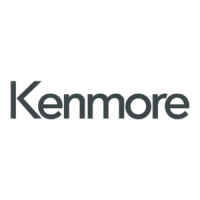GARMENT CONSTRUCTION STITCHES
STRAIGHT STITCHING
Set your machine just as shown in the
illustration in order to straight stitch.
It is important each dial have the
following settings.
SETTINGS
Special Stitch Dial --ww_---
Stitch Length Control - 12 to 6
Stitch Width Control - Red Dot
Special Stitch Variegator - Red Dot
Use straight stitch foot and straight stitch
hole on multi purpose needle plate.
You will find in garment construction that you are doing two types of
sewing - temporary and permanent.
1. Temporary stitching - Usually the longest stitch possible and often done
on a single layer of fabric. The various types of temporary stitching are:
Basting
Stay stitching
Guide line marking
2. Permanent stitching - This is the actual stitching that holds the garment
together. Much of this stitching is visible on the outside of the garment
and therefore must be good looking.
The best length stitch to use for medium weight fabrics is 10-12 stitches
per inch. This is in the middle range of the Stitch Length Control.
You must remember to lengthen the stitch for heavier fabrics, multiple
layers of fabric and thicker seams. Some of these seams are:
Common two layer seams
Curved two layer seams
Top stitched three layer seams
Top stitched four layer seams
When you have two seams crossing each other with considerable thickness,
sew slowly and carefully so the seam will be as strong as possible in this
area.
25
Cornering Guide
oVo
Fig. 1
Fig. 2
TURNING A SQUARE CORNER
To turn a square corner 5/8" from
the fabric edge, stop stitching with
the needle tip piercing the fabric,
when reaching the cornering guide
as shown. Raise the presser foot,
turn fabric. New stitching line will
align with 5/8" seam guide on side
of needle plate. Lower the presser foot
and begin stitching in new direction.
ZIGZAG STITCHING
SETTINGS
Special Stitch Dial - _]-'------
Stitch Length Control - Any number
Stitch Width Control - 1 to 4
Special Stitch Modifier - Red Dot
Use zig zag presser foot and zig zag hole on
multi purpose needle plate.
This type of stitching greatly expands
the use of your machine. This is the
feature that enables you to overcast
seams, blind hem, applique, button-
hole, monogram, and make all the
pretty embroidery designs by machine.
Simply use the settings indicated in
the illustration for the simple zigzag.
Follow directions given in the follow-
ing pages for more specific uses.
OVERCASTING
This is one of the more frequently used
zigzag stitches in garment construc-
tion. You may want to overcast
along the raw edge of each seam
allowance or fold the raw edge towa[d
the garment and stitch.
Fig. 1 shows the raw edge finished.
Fig. 2 illustrates the folded edge stitch-
ed.
Stitch so the needle pierces the fabric
just short of the outside edge. Raw or
worn edges of older garments can be
overcast to prevent further raveling. 26

